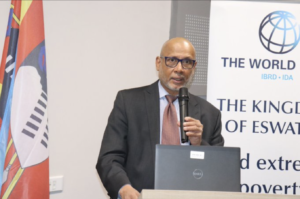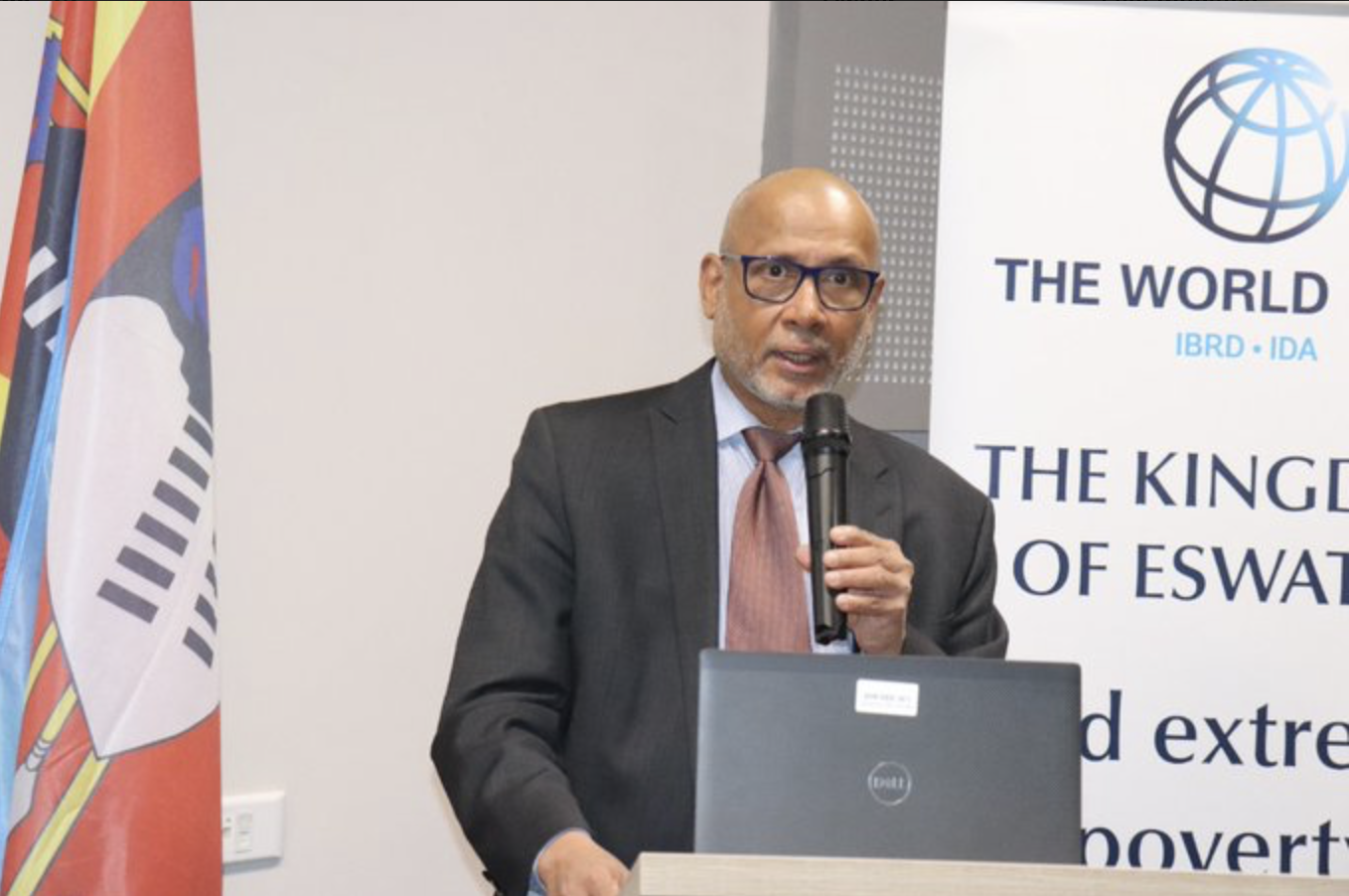By Phephile Motau
The World Bank says the state-owned enterprises restructuring, particularly the unbundling of EPTC, is a critical reform that needs to be implemented in the country. This is contained in the Country Private Sector Diagnostic which has been compiled by the World Bank and the International Finance Corporation (IFJ) that was released last week. According to the report, one reform priority is implementing the cabinet-approved state-owned enterprise (SOE) restructuring framework designed to separate commercial activities from regulatory functions, consolidate and close some SOEs to decrease their fiscal burden, improve operational performance, and reduce the state presence in sectors that can be served by the private sector.

The reforms framework was compiled by the Eswatini Economic Policy Analysis and Research Centre (ESEPARC) and it aims to reduce the number of parastatals from 49 to about 30.
It was stated that among the most critical SOE reforms in progress was the unbundling of the Eswatini Post and Telecommunications Company (EPTC), a necessary step that would allow increased competition and private investment in the digital sector and lead to lower prices and increased access.
The diagnostic argues that this reform can, in turn, open opportunities for job-creating digital services and help Eswatini reach the goal of the African Union’s Digital Transformation Strategy ensuring that every African individual, business, and the government is digitally enabled by 2030.
The diagnostic state that reforms needed to focus on unlocking the potential of the digital economy and creating a more balanced playing field by completing ongoing reforms while sequentially implementing cross-cutting reforms to strengthen the trade environment, the regulatory environment, and access to financial services, land, and skills.
The organisations said competition in Eswatini was constrained by (a) the presence of SOEs and a lack of competitive neutrality among firms; (b) sector regulations that restrict entry, foster collusion, and discriminate among market players; and (c) insufficiently effective authority to identify and deter anticompetitive behaviour in markets. It was argued that poor competition eroded consumer welfare as consumer surplus was converted into producer surplus through prices that are above market equilibrium prices.
“At the same time, high barriers to entry protect inefficient incumbents, thus stifling private sector development. Ongoing reforms in Eswatini aim to address these challenges,” the diagnostic states.
The organisations said that compared to peer countries, Eswatini had relatively concentrated markets. It was reported that market dominance was not a problem per se, but it can create opportunities for the abuse of market power by dominant players, especially in cases where the effectiveness
of the competition framework is limited. In addition to having relatively concentrated markets, Eswatini is said to have a relatively less effective antimonopoly policy and low market-based competition.
The organisations said low levels of competition increase market concentration and dominance, thus worsening consumer welfare.
It was stated that the SOE footprint is significant (there are 30 commercial SOEs), raising the risk of crowding out the private sector. The organisations said that given their social and developmental mandate, SOEs were sometimes confronted with the need to charge low prices for their services, yet the lack of cost-recovery tariffs may be unsustainable. “This situation discourages the private sector from entering into such sectors. SOEs are active in agribusiness, information and communication, energy, travel and tourism, transport, health, and housing,” the report states.
It was argued that while monopoly positions in some sectors such as energy, transport, and communications might have been previously justified by the small size of the economy, the urgency and ongoing efforts to unbundle EPTC demonstrated the need to introduce competition into these markets.
“Moreover, the presence of SOEs in sectors such as agribusiness, in which where the private sector is active, can be distortive if the competition framework is not effective,” the report states.
The organisations said overlap between ownership, regulation, and management could upend competitive neutrality and lead to preferential treatment for SOEs.
“Assigning regulatory functions to SOEs in the sector in which they operate can create conflicts of interest, thus increasing barriers to entry for other firms. In the construction sector, for example, the governance body of the regulatory council consists of members who are directors of construction firms, hence creating opportunities for collusion and regulatory capture,” the report states.
It was further said that this created an incentive to make decisions that could harm both consumers and competition by creating barriers to entry.
The organisations added that vertically integrated SOEs that provided essential services upstream and competed with their customers for market share in the downstream markets can distort competition.
“EPTC and the Eswatini Electricity Company (EEC) are typical examples of SOEs that provide essential infrastructure to upstream customers but that may end up competing with their customers in the downstream markets,” the report states.
It was also reported that the EEC provided transmission to all electricity generators and at the same time competed for the renewable energy market with independent power producers (IPPs).
They added that the Marketing Board also combines regulatory and commercial functions in both the input and output markets, thus creating potential sources of conflict-of-interest access, undermining Eswatini’s opportunity to benefit from the digital economy.
“The monopoly and exclusive rights of the incumbent operator (the EPTC) in international connectivity and the national broadband backbone has led to the underdevelopment of digital infrastructure, particularly in rural areas,” the report states.
The organisations said although the introduction of a second operator in the broadband retail market has contributed to reduced prices, MTN Eswatini enjoyed an 87 per cent market share.
“Limited competition and the lack of direct access to an international gateway result in mobile internet prices that are out of reach for a large share of the population. As a result, it is estimated that less than one-third of the population uses the internet despite mobile broadband networks being available for 90 per cent of the population, a wide usage gap,” the report states.
It was contended that Eswatini had mainly relied on individual mobile network operators to build its own infrastructure and share facilities, encouraging passive infrastructure sharing among service providers.
The organisations said expanding infrastructure sharing to include active equipment such as intelligent networks and radio access networks among other active components of the network would promote private investment, maximize the use of network facilities, reduce the duplication of network infrastructure, and promote the availability of high-quality, cost-effective, competitive telecommunication services.
The organisations added that the government has committed to the unbundling of EPTC, a reform that started in 2013 as part of the Electronic Communications Law.
“Unbundling EPTC into legally separated telecommunications infrastructure and retail service operators could open opportunities for increased private sector participation and competition in the sector and is expected to translate into more affordable and better-quality services.
This in turn could open up opportunities for developing other pillars of the digital economy, including government and private digital platforms and digital financial services, which remain underdeveloped.
The report states that to complete the unbundling, the government would amend several regulations: (a) the Eswatini Telecommunications Corporation Bill, (b) the Eswatini Communications Infrastructure Corporation Bill, and (c) the Swaziland Postal Corporation Bill. “Successful implementation of the reform will require careful consideration of market conditions and of structuring options for the new entities to ensure their sustainability,” the report states.
According to the diagnostic, the cabinet recently approved a report from the International Telecommunications Union with recommendations on the EPTC unbundling and the Mobile Network Operator Active Infrastructure Sharing and National Roaming Guidelines (2021).
It was stated that several factors constrained Eswatini’s competitiveness and ability to unlock export potential and private sector-led growth, making reform an urgent priority. The organisations said the government had articulated an ambitious, long-term reform agenda to unlock private investment (the National Development Plan 2019/20–2021/22 and the Post-Covid-19 Economic Recovery Strategy), but the pace of implementation has been uneven.
Eswatini has a dual governance system: a modern constitutional system and a traditional system. The organisations said most business transactions fell under the administration of the modern system, which is anchored in market institutions, but Eswatini’s governance system created avenues for discretionary access to opportunities and privilege by connected individuals and firms, and this dilutes the government’s previous reform commitments.
“Moreover, land governance in the traditional system creates disincentives to investing in agriculture.




